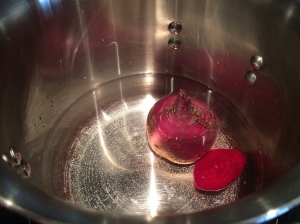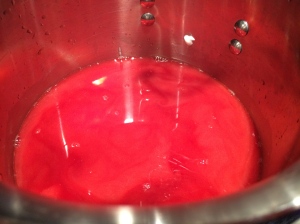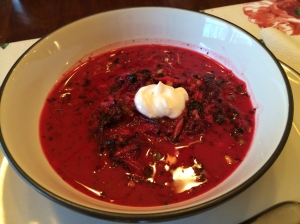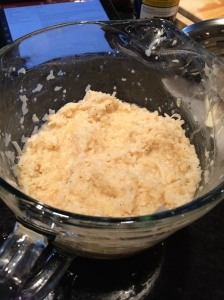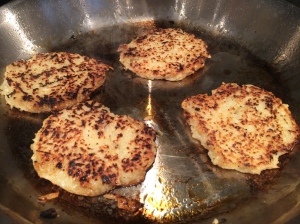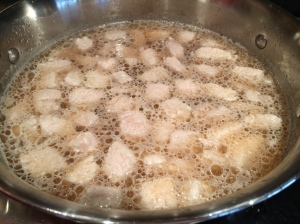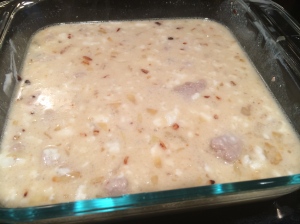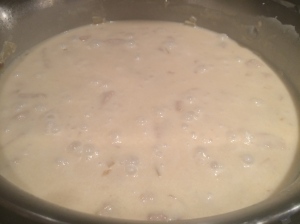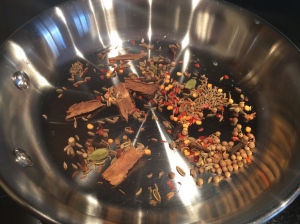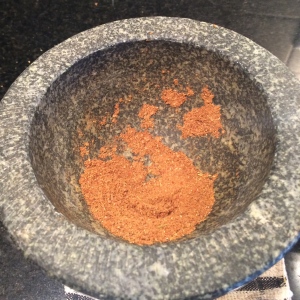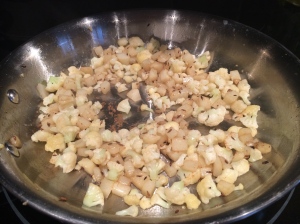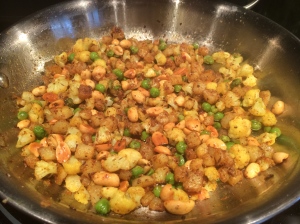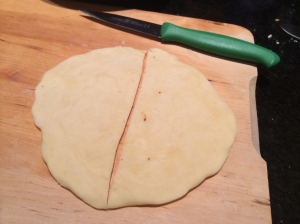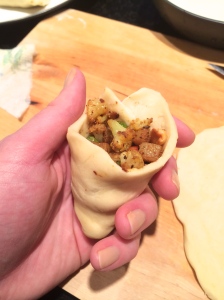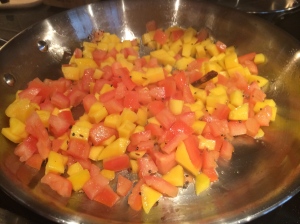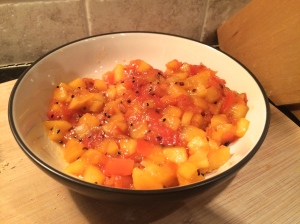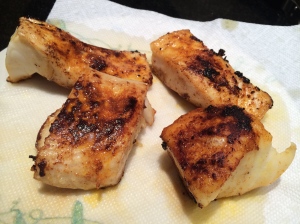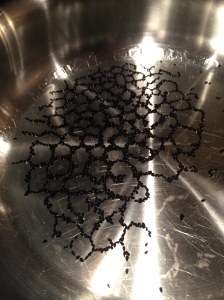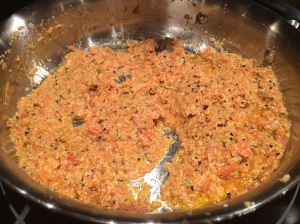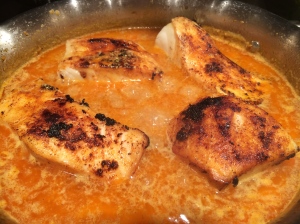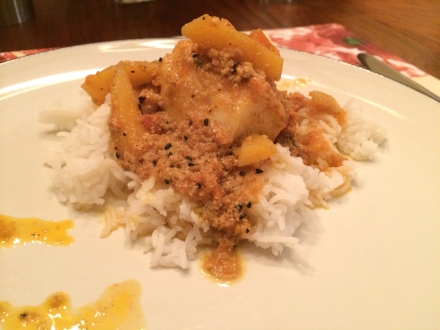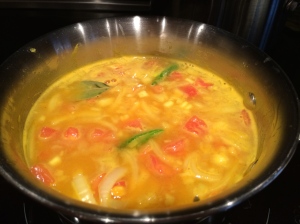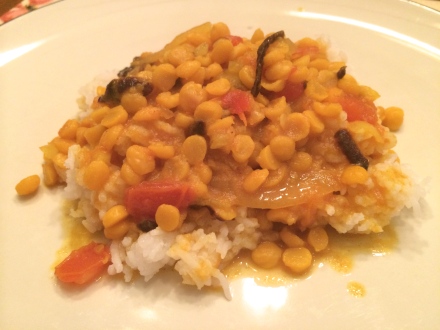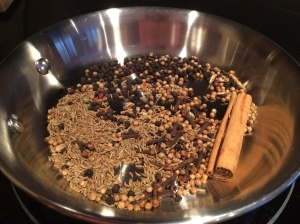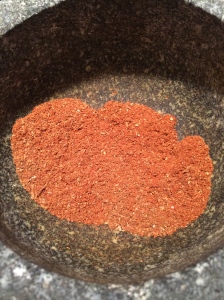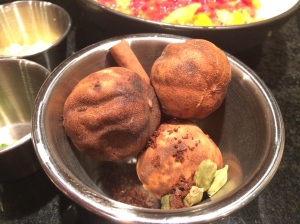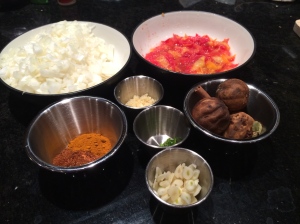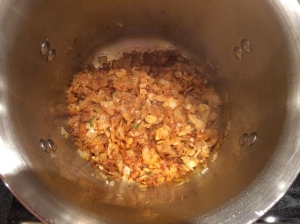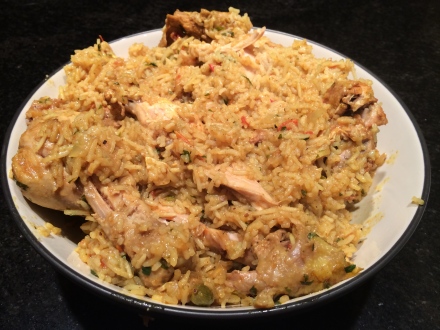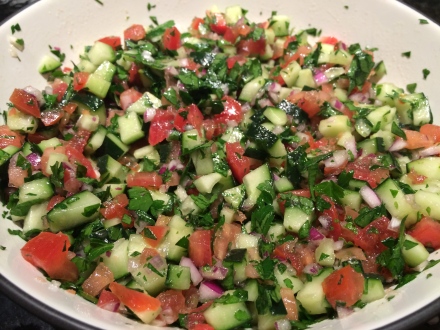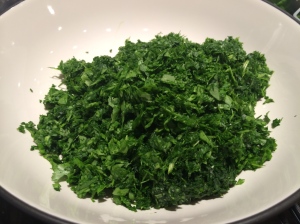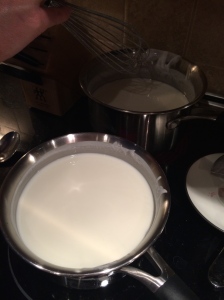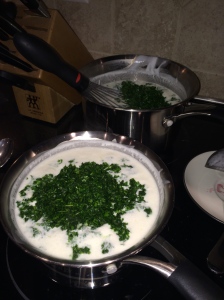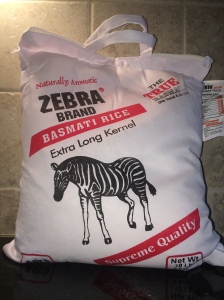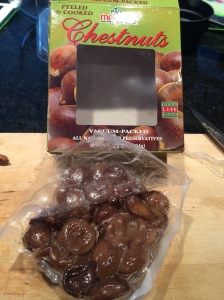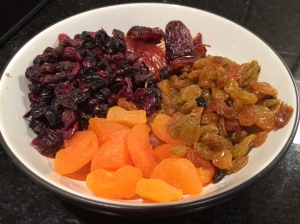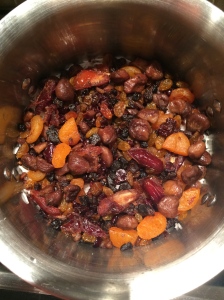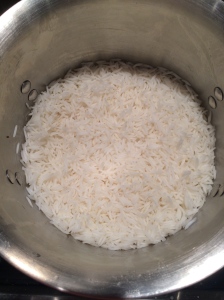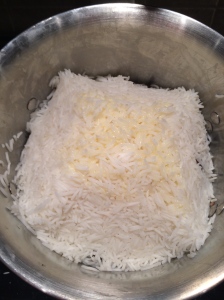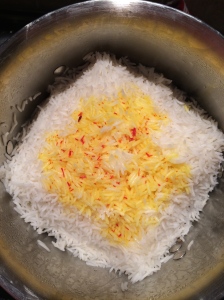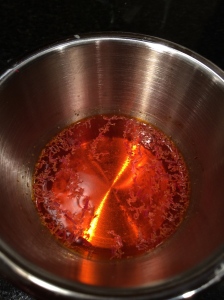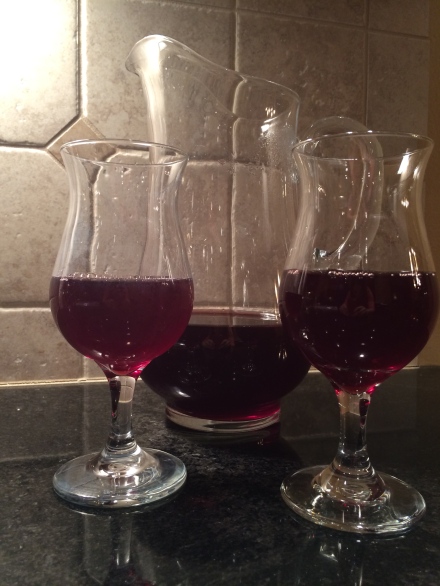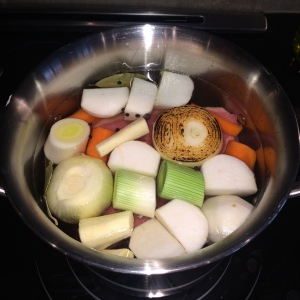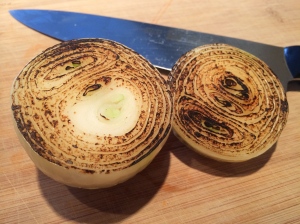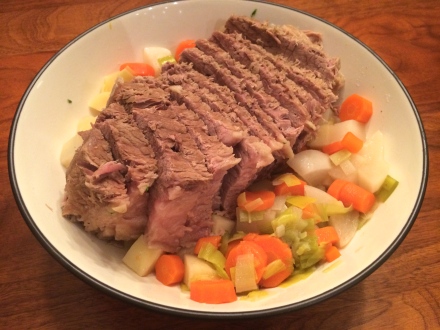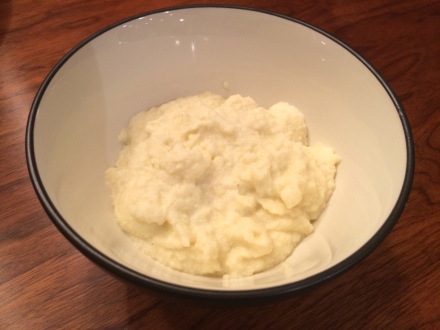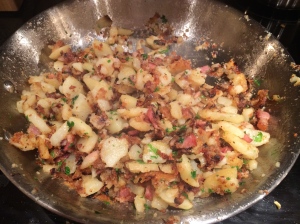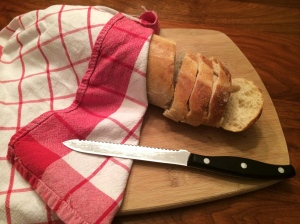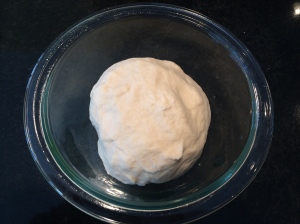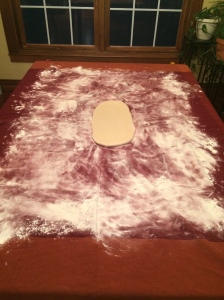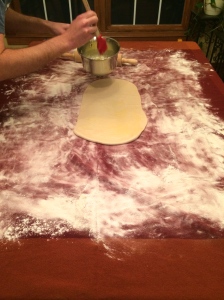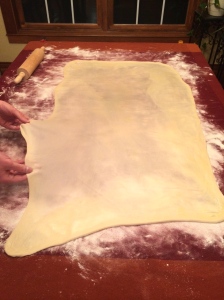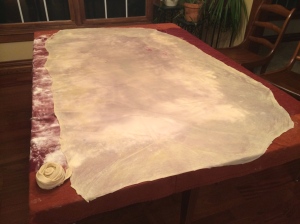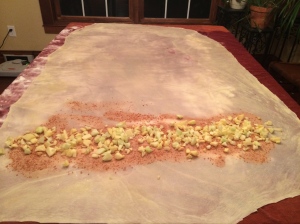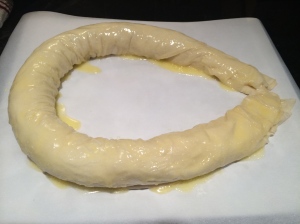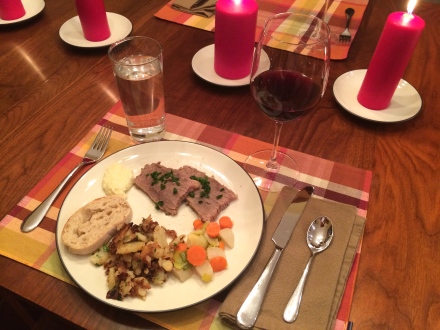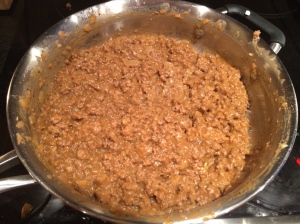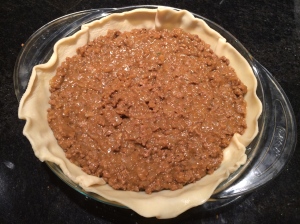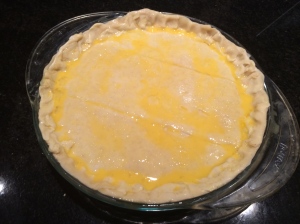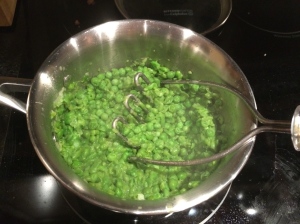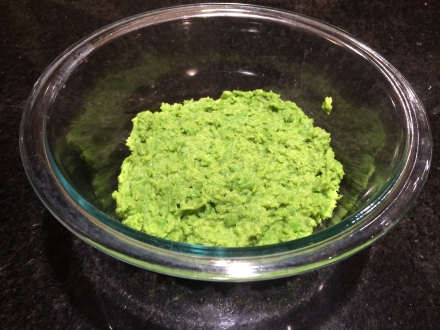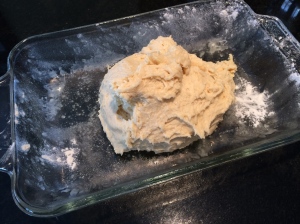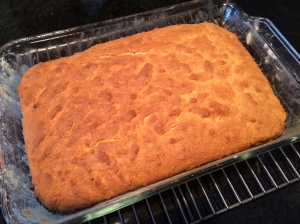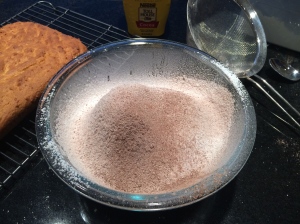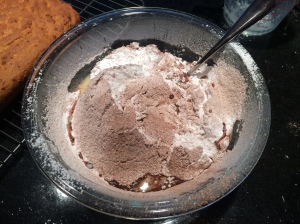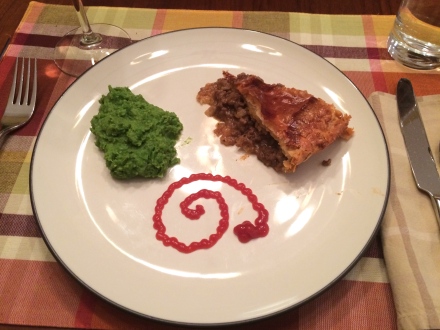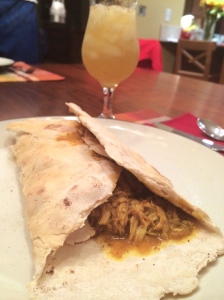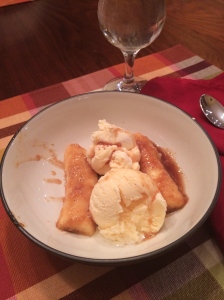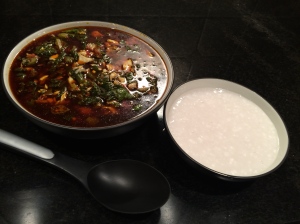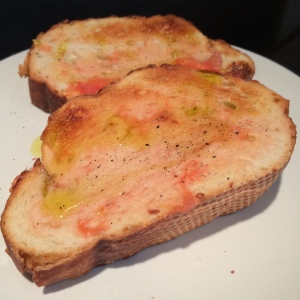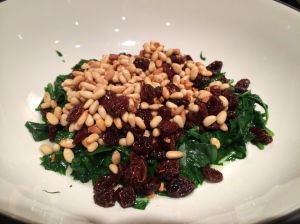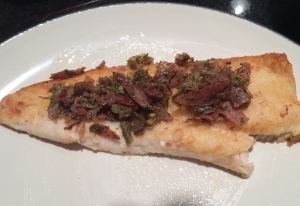We made it to the Bs!! Once again, we had a cold, snowy day to cook a meal from the Caribbean.
This was another meal that tested my food aversion limits. I have a bit of a mental block about most seafood, so I started getting nervous when I read about the most famous food being conch meat. I took the word of several other global cooking bloggers and avoided spending too much time looking into what conchs look like out of their shells but before having the skin and eyes removed…
The three most common conch dishes I read about in The Bahamas are 1) conch salad (in which the conch is usually eaten raw… sorry, not that adventurous!), 2) conch chowder (maybe…), or 3) conch fritters. The fritters looked the best out of these three, and it definitely occured to me that the conch would be most well disguised in this option. I almost backed out on cooking with conch when we couldn’t find it locally, but Tyler and my brother convinced me to stick with it. Amazon to the rescue–they sell canned conch! It was more expensive than I would have liked for one can, but as Tyler keeps reminding me, “we aren’t doing this to save money!”
Our second dish for The Bahamas is peas and rice. Contrary to what you might expect from their name, pigeon peas are a type of bean. I’ve read that this is common throughout the Caribbean, so I will probably come across it again. It seemed like a good accompaniment to the fritters–and a good fallback in case I couldn’t stomach the conch. 🙂
I picked a dessert for our third dish, and I felt pretty confident that it would be good. Gauva duff–sweet bread filled with guava goop and guava sauce!
Conch Fritters (recipe)
This was another “divide and conquer” meal, and I left Tyler in charge of the fritters (surprise, surprise). I generally avoided the conch preparing scene, but I did snap a photo of the chopped conch.

The conch pieces were mixed with finely diced veggies–onion, red and green bell peppers, hot pepper (we used small Thai peppers that were leftover from a few countries ago), celery, and chopped cilantro–and the dry ingredients–flour, thyme, and seasoned salt. Water was added to this to reach a thick, somewhat sticky consistency. Yes, that is a glass of red wine that appeared between these steps. 🙂
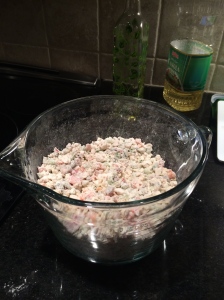

It took much longer than we expected for the oil to get hot. We used canola oil in the stockpot (to minimize splattering) and were probably a bit shy of the recommended two inches. Since this used a LOT of oil, our plan was to add more only if needed. We appreciated the tip from this recipe to drop a small amount of the batter in the oil to test whether or not it was hot enough. Eventually, it got hot and Tyler started frying!

Sadly this took a long time and caused us to miss the beginning of the Olympics closing ceremony. 😦

We also made a basic dipping sauce for the fritters. I saw a lot of variation in what the sauce should include, but I followed a common theme in the recipes and mixed together 2 Tbs. mayonnaise, 2 Tbs. ketchup, and 2 Tbs. lime juice. I intended to add a dash of hot sauce but forgot about it until we were already eating.

Peas and Rice
There were a lot of recipes out there for Bahamian peas and rice, and just as many comments on those recipes from Bahamian natives with comments about what is it and is not authentic. I merged a recipe from all of this information, although I have started to notice that two natives of a country do not aways have the same opinion of what is “authentic.”
This recipe started with 3 slices of bacon, chopped and cooked. Yum. I added the green pepper, celery, and onion to the bacon and bacon fat and cooked until the onion was translucent. I added the minced garlic and cooked for another minute or two.
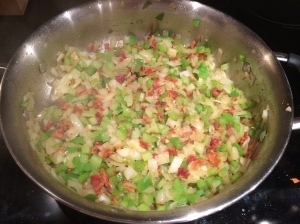
Next I added the tomato paste, thyme, coconut milk, and pigeon peas. I forgot to take a picture at this step, but you’ll have to trust me when I say that it looked pretty tasty at this point. As a side note, this is the step where I intended to add browning sauce, which some comments said was critical to make authentic Bahamian Peas and Rice. I totally forgot to put it on the grocery list, and we (Tyler) had already made two trips to the grocery store that day. I added some extra tomato paste to make up for it.
Once this came to a boil, I added the rice and enough water to cover it. I used white Basmati rice, since that is the only long grain white rice we had on hand. In retrospect, I should have soaked it for a while like I did for Azerbaijan, because that stuff was thirsty. Every time I turned my back, the liquid was gone, so I kept adding water to the pan. I gave it about 30 minutes, after which I declared it to be done. It got to hang out on the stove for a while longer, though, since the fritters were taking forever.
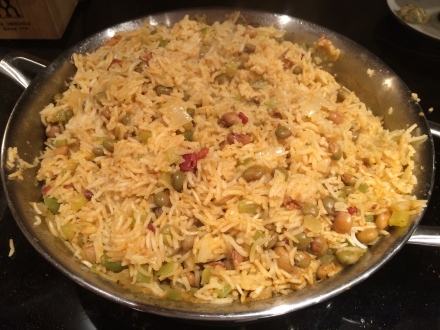
Guava duff (recipe)
This was definitely the most labor intensive of the recipes! We did most of the work before starting the fritters or peas and rice, and we had to run the dishwasher while cooking the rest of the meal since it was full after making the guava duff.
Unfortunately, we had to use canned guavas. An employee at our grocery store told Tyler they had fresh guavas the day before, but they were getting too old and had to be tossed. We used three 28 oz. cans of guava to reach the 4 cups of guava flesh for the filling! We ended up with extra filling, so I think we could have gotten by with just two cans.
I have never cooked with guavas before. They smelled deliciously sweet and tropical. *Note below picture is just ONE of the three cans of guavas!
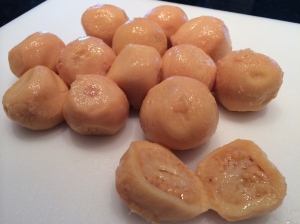
I separated the seeds and pulp from the flesh, which I chopped into small pieces. These were mixed with brown sugar, nutmeg, and a pinch of salt and cooked over medium-low heat for about 30 minutes. I’m not sure what the final consistency was supposed to be, but I kept mashing them to get rid of the big pieces. It felt and looked like I was making applesauce!
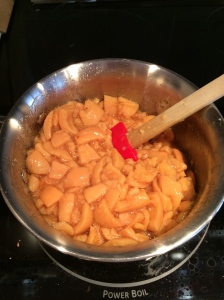
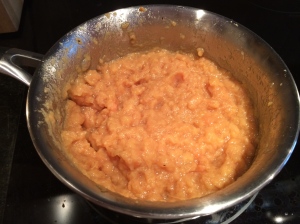
I transferred this to another bowl to chill in our walk-in refrigerator (AKA the screened porch on a cold midwest evening). Meanwhile, I made the sauce. This used the pulp from the guavas (I ran them through the food mill to remove the seeds). The recipe called for 1/2 can of sweetened, condensed milk but didn’t say what size of can, so I used somewhere between 1/4 and 1/2 cup. I also scaled back the sugar a bit from the recipe. I added a splash of the optional vanilla extract and rum. This was a crazy, thick, gooey sauce.

Meanwhile, Tyler prepared the dough and rolled it out.
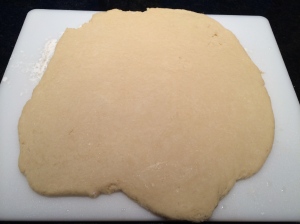
And this is where disaster struck! I scooped all of the filling onto the dough and attempted it roll it up. There was sooo much filling that it was oozing out everywhere. It was a total mess, and it was HUGE, so there was no way we could really wrap it up in the parchment paper/aluminum foil. I made a controversial decision to unroll it and start over. I scooped as much of the filling into a bowl as I could. The recipe suggests mixing some of the guava filling in with the dough (originally we had skipped this since the filling was still hot), so I didn’t worry about the guava filling that stuck to the dough. I kneaded it together and had a big sticky mess. Several additions of flour later, I had a somewhat workable dough. For the second attempt, we made two smaller rolls instead of one, and we didn’t use all of the filling. The first roll was somewhat successful, and the second seems pretty close to what it was supposed to look like.
Since my hands were covered with sticky dough/guava goop and I was reasonably frustrated, I didn’t capture any photos of the disaster…
I did document one of the rolls as it was covered in parchment paper and 2-3 layers of aluminum foil. I definitely felt like a wannabe burrito chef doing this part.
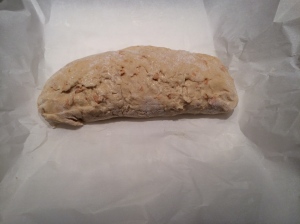

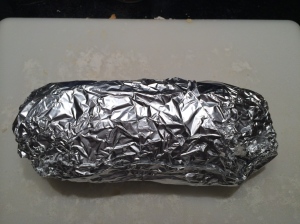
Now, the recipe suggests two cooking methods: one on the stove and one in the oven, both involving submerging it in boiling water. We attempted this in our stockpot, but it just wasn’t big enough. So we moved them to the crockpot, put on the lid, and set it on high!

We checked one after the suggested 1 hr. 20 minutes, and it was still pretty goopy. We decided to experiment a bit, and I re-wrapped this one and set it in a shallow roasting pan with hot water in the oven at 300°F. I left the second roll in the crockpot. We checked on them after another hour or so, and then they both came out perfectly done!
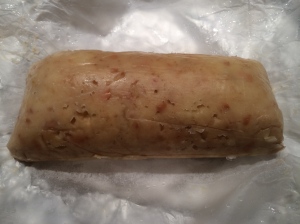
I cut it into thick slices and served it with the sauce (not pictured below).

I think our frustration over the guava duff, annoyance that we missed the beginning of the Olypmics closing ceremony, and the fact that we ended up eating while watching the rest of it on TV (1-2 hours later than originally planned, as usual…) limited my ability to appreciate this meal. However, I did enjoy it
The fritters were good. I won’t say they were phenomenal, but they were good. I am still working past my mental block of seafood as I eat the leftovers. 🙂 These reminded us a lot of a fried, seafood version of the breakfast muffins we like to make. I really liked the extra kick of the lime in the dipping sauce. The conch meat was pretty subdued in this, other than a general seafood flavors. Several recipes I looked at said that you could substitute other types of seafood for the conch, and I can see why. I don’t think the difference would be very noticeable.
The peas and rice were good, although they weren’t as flavorful as I hoped. I think we ended up with too much rice relative to everything else, so the flavors were diluted. Tyler really enjoyed this though, and I don’t think it will be a problem to go through the leftovers. I could see jazzing this up with more seasonings (or less rice) as a simple vegetarian meal.
The guava duff was absolutely amazing. Loved it. The guavas had a unique and tropical flavor that I’m not used to, and the duff was a great, soft consistency. I had to go light on the sauce to avoid it getting too sweet, but overall this was wonderful and a great dessert (at least as great as a dessert can be without chocolate 🙂 ). I have a sneaking suspicion that it would be good with some fresh nutmeg grated on top, but I haven’t tried that yet. Although I wouldn’t be exited about repeating the amount of work and frustration we had, I would happily eat this again! I was glad we got to try a new cooking method, and I think we would have less frustration if we made it again.
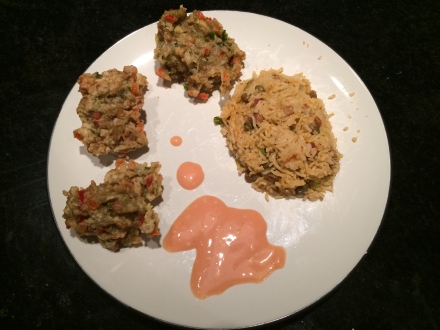
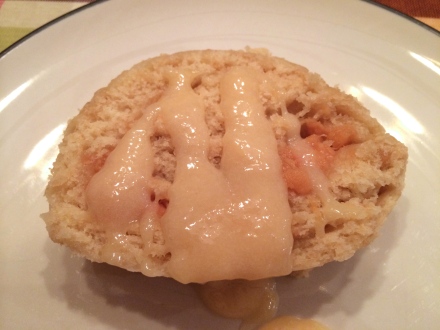
Overall, I would say this meal was pretty successful! The biggest downside is all the leftover celery that we have to do something with (sorry, no ants on a log in this house).
Next, we are back across the ocean to Bahrain!

